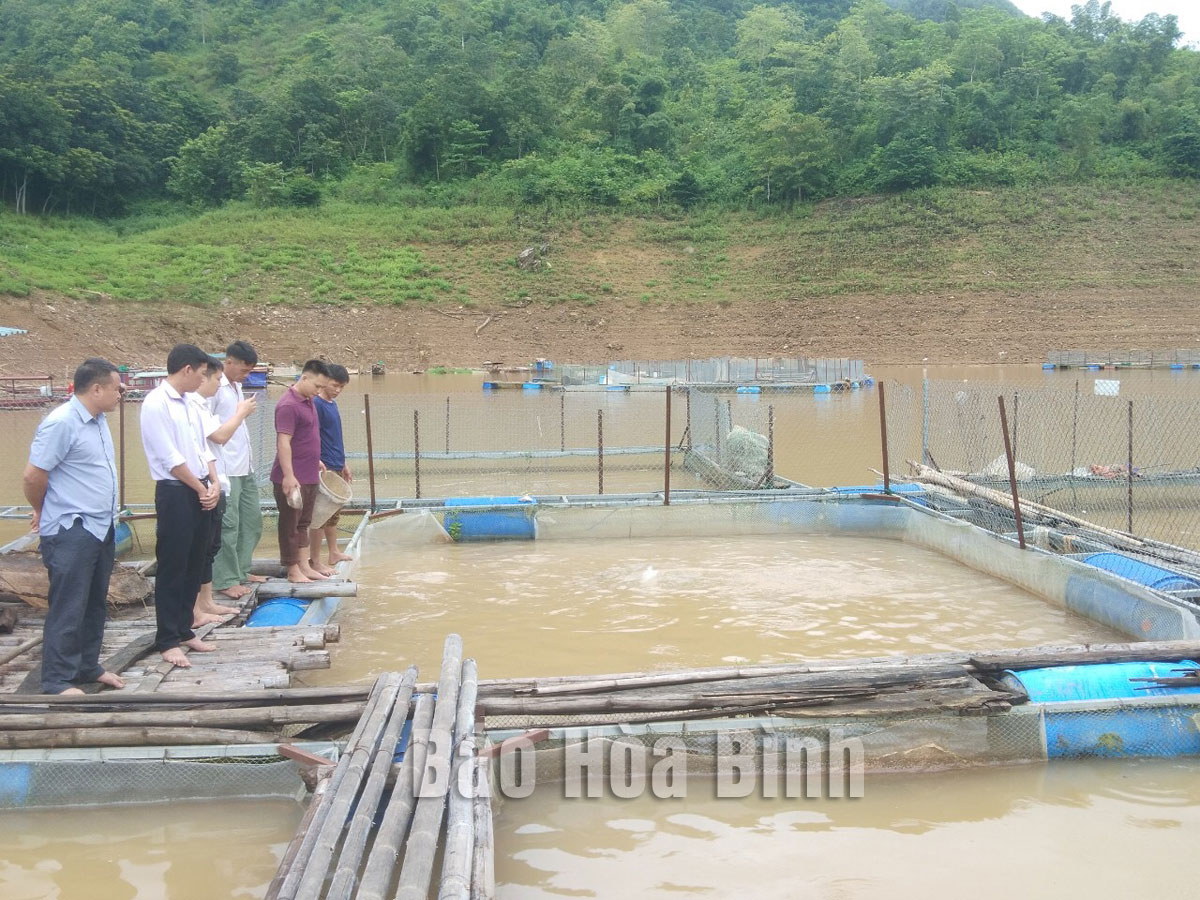(HBO) - Hoa Binh is currently home to nearly 2,700 hectares of fish farms, with 4,890 cages. The province produced 12,000 tonnes of fish in 2022 and 3,060 tonnes in the first three months of this year.
Locals in Son Thuy commune, Mau Chau district, earn big from fish farming.
Catching activities mostly take place on the reservoir of Da River hydropower plant and local streams and lakes. However, the catchings only make up a small proportion in the province's total fisheries production. The locality has popularised safe fishing methods among local fishermen to ensure sustainable fisheries resources.
In the first quarter of this year, the province produced 31 million fries of all kinds. Making full use of the locality's advantages in a large area of over 14,000 hectares of water surface, local farmers have developed the fish farming industry.
Currently, Hoa Binh has 25 fish farming facilities with a scale of 20 cages, four having over 100 cages, and seven businesses partnering with farmers holding VietGAP certificates, providing more than 2,000 tonnes of fishes to the market each year.
Alongside, three production and selling chains of Da River fishes to Hanoi market have been established.
Over the years, the provincial Sub-Department of Fisheries under the Hoa Binh Department of Agriculture and Rural Development has actively designed projects and plans to promote fisheries production.
Therefore, despite impacts from the COVID-19 pandemic, all fisheries targets of the province for 2021 and 2022 were completed. Last year, the economic value of the local fisheries sector reached 254 billion VND (10.8 million USD), while that of aquaculture hit 560 billion VND.
This year, the province aims to continue promoting its advantages and potential in aquaculture, while strengthening the application of new technologies in the fisheries production, protecting the fisheries resources, and diversifying fish varieties with high economic value for farming.
At the same time, the province will also boost the development of both catching and farming in association with protecting local fisheries resources, thus ensuring stable income for communities along the Hoa Binh Lake, protecting the environment and promoting tourism.
This year, Hoa Binh aims to produce 12,000 tonnes of fisheries products, including 9,500 tonnes of farming production./.



